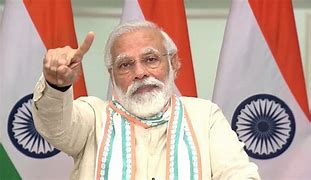Feature
India successfully test fires its heaviest rocket

Sriharikota (Andhra Pradesh): India Thursday moved forward in rocket technology with the successful flight testing of its heaviest next generation rocket and the crew module.
Precisely at 9.30 a.m., the 630 tonne Geosynchronous Satellite Launch Vehicle-Mark III (GSLV-Mark III) standing 43.43 metre tall freed itself from the second launch pad and with a reverberating deep throated roar, rose into the sky.
With a thick orange flame at its tail, the expendable rocket ascended towards the heavens with one way ticket as its design life span is just around five minutes.
way ticket as its design life span is just around five minutes.
The Rs.155 crore mission has twin purposes. The main purpose is to test the rocket’s atmospheric flight stability with around four tonne luggage.
The second and incidental objective is to study the re-entry characteristics of the crew module-called Crew Module Atmospheric Re-entry Experiment – its aero braking and validation of its end-to-end parachute system.
According to an Indian Space Research Organisation () official, it will be of the size of a small bedroom and can accommodate two to three people.
Just over five minutes into the flight, the rocket spat out the giant cup cake shaped 3.7-tonne crew module at an altitude of 126 km.
The crew module then descended towards Earth at a high speed. The speed was moderated remotely manipulating its on-board motors till 80 km above the earth.
From here the ballistic re-entry into the atmosphere began while the on-board thrusters were shut down.
The crew module’s heat shield was expected to experience a heat of around 1,600 degrees centigrade.
At an altitude of around 15 km, the module’s apex cover separated and the parachutes were deployed.
The module soft crashed in Bay of Bengal near Andaman and Nicobar Islands.
From here, the crew modules multi-modal and multi-state transport journey would begin.
A naval ship tracking the signals from the module will pick up the module and deliver it at the Ennore Port near Chennai in Tamil Nadu. From there it will be brought to Sriharikota in Andhra Pradesh and then it will be taken to the Vikram Sarabhai Space Centre, Thiruvanthapuram in Kerala.
At the mission control centre there was no control on ISRO’s scientists happiness at the success.
Speaking about the mission, ISRO’s Chairman K. Radhakrishan said: “India started development of the rocket a decade ago and today completed the first experimental flight.
“The performance of the solid and the liquid engines were as expected,” he said.
“The unmanned crew module splashed in Bay of Bengal as expected,” he added.
S. Somanath, project director of GSLV Mark III, said: “India now has a new launch vehicle. The payload capability of the Indian rocket has been enhanced significantly.”
The Thursday mission success is sweet for the Indian space fraternity as it comes after successful launch of Mars Orbiter last year and older version of GSLV rocket powered by its own cryogenic engine early this year.
A cryogenic engine is more efficient as it provides more thrust for every kilogram of propellant burnt.
This was the second mission of GSLV rocket during the last four years after two such rockets failed in 2010.
The GSLV-Mark III is designed to be a three stage/engine rocket with a lift off weight of 630 tonnes.
The first stage comprises two identical S-200 large solid boosters with 200 tonne solid propellant, that are strapped on to the second stage, the L110 re-startable liquid stage.
The third stage/engine is the cryogenic.
For the country ISRO perfecting the cryogenic engine technology is crucial as precious foreign exchange can be saved by launching communication satellites by itself.
Entertainment
Meghalaya Reserves Legalized Gambling and Sports Betting for Tourists

The State Scores Extra High on Gaming-Friendly Industry Index
Meghalaya scored 92.85 out of 100 possible points in a Gaming Industry Index and proved to be India’s most gaming-friendly state following its recent profound legislation changes over the field allowing land-based and online gaming, including games of chance, under a licensing regime.
The index by the UK India Business Council (UKIBC) uses a scale of 0 to 100 to measure the level of legalisation on gambling and betting achieved by a state based on the scores over a set of seven different games – lottery, horse racing, betting on sports, poker, rummy, casino and fantasy sports
Starting from February last year, Meghalaya became the third state in India’s northeast to legalise gambling and betting after Sikkim and Nagaland. After consultations with the UKIBC, the state proceeded with the adoption of the Meghalaya Regulation of Gaming Act, 2021 and the nullification of the Meghalaya Prevention of Gambling Act, 1970. Subsequently in December, the Meghalaya Regulation of Gaming Rules, 2021 were notified and came into force.
All for the Tourists
The move to legalise and license various forms of offline and online betting and gambling in Meghalaya is aimed at boosting tourism and creating jobs, and altogether raising taxation revenues for the northeastern state. At the same time, the opportunities to bet and gamble legally will be reserved only for tourists and visitors.
“We came out with a Gaming Act and subsequently framed the Regulation of Gaming Rules, 2021. The government will accordingly issue licenses to operate games of skill and chance, both online and offline,” said James P. K. Sangma, Meghalaya State Law and Taxation Minister speaking in the capital city of Shillong. “But the legalized gambling and gaming will only be for tourists and not residents of Meghalaya,” he continued.
To be allowed to play, tourists and people visiting the state for work or business purposes will have to prove their non-resident status by presenting appropriate documents, in a process similar to a bank KYC (Know Your Customer) procedure.
Meghalaya Reaches Out to a Vast Market
With 140 millions of people in India estimated to bet regularly on sports, and a total of 370 million desi bettors around prominent sporting events, as per data from one of the latest reports by Esse N Videri, Meghalaya is set to reach out and take a piece of a vast market.
Estimates on the financial value of India’s sports betting market, combined across all types of offline channels and online sports and cricket predictions and betting platforms, speak about amounts between $130 and $150 billion (roughly between ₹9.7 and ₹11.5 lakh crore).
Andhra Pradesh, Telangana and Delhi are shown to deliver the highest number of bettors and Meghalaya can count on substantial tourists flow from their betting circles. The sports betting communities of Karnataka, Maharashtra, Uttar Pradesh and Haryana are also not to be underestimated.
Among the sports, cricket is most popular, registering 68 percent of the total bet count analyzed by Esse N Videri. Football takes second position with 11 percent of the bets, followed by betting on FIFA at 7 percent and on eCricket at 5 percent. The last position in the Top 5 of popular sports for betting in India is taken by tennis with 3 percent of the bet count.
Local Citizens will Still have Their Teer Betting
Meghalaya residents will still be permitted to participate in teer betting over arrow-shooting results. Teer is a traditional method of gambling, somewhat similar to a lottery draw, and held under the rules of the Meghalaya Regulation of the Game of Arrow Shooting and the Sale of Teer Tickets Act, 2018.
Teer includes bettors wagering on the number of arrows that reach the target which is placed about 50 meters away from a team of 20 archers positioned in a semicircle.
The archers shoot volleys of arrows at the target for ten minutes, and players place their bets choosing a number between 0 and 99 trying to guess the last two digits of the number of arrows that successfully pierce the target.
If, for example, the number of hits is 256, anyone who has bet on 56 wins an amount eight times bigger than their wager.























